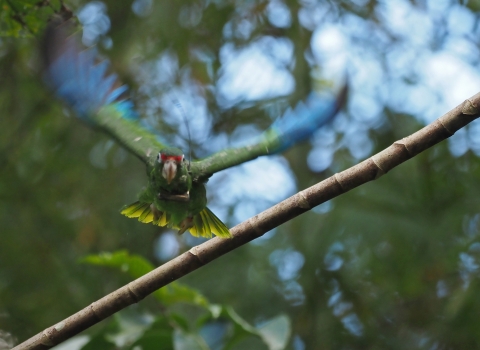With sea turtle nesting season beginning along the Texas coast in late March, we are urging everyone using Texas beaches to do their part to help detect and protect threatened and endangered sea turtles on the beach. This includes the Kemp’s ridley sea turtle, which is the most critically endangered sea turtle in the world, as well as the threatened loggerhead and green sea turtles.
“The public can help us protect these imperiled species by keeping an eye out and reporting all nesting sea turtles, their nests, and hatchlings from late March through September,” said Mary Kay Skoruppa, U.S. Fish and Wildlife Service Sea Turtle Coordinator for Texas. “We also ask that visitors drive slowly and carefully on beaches so that vehicles do not inadvertently collide with nesting turtles or emerging hatchlings. By working together, we can help ensure these species continue to find safe nesting conditions on the Texas coast now and into the future.”
To help ensure the survival of nesting sea turtles and eggs, biologists and volunteers will patrol Texas beaches from April through July. The Service, along with the National Park Service, Texas Parks and Wildlife Department, Texas A&M University at Galveston, the University of Texas Marine Science Institute, Sea Turtle, Inc., and Turtle Island Restoration Network will be working together to coordinate a response when a nesting sea turtle, tracks, or nest is found.
If a nesting sea turtle is seen, the Service advises visitors to quickly report the event by calling 1-866-TURTLE-5 (1-866-887-8535). After observing and reporting a sea turtle, visitors are asked to remain at the site until a biologist arrives. If it is not possible to stay until a biologist arrives, visitors are asked to carefully mark the site by laying pieces of beach debris, such as pieces of wood or other debris, in a large circle around the nest area, not on top of the nest, so biologists will be able to find the nest when they arrive.
When encountering a nesting sea turtle, the public is urged to keep their distance and avoid disturbing the turtle and their nesting site. After the females dig their nests in the sand to lay eggs, they must not be kept from returning back to the surf.
The Kemp’s ridley sea turtle is the smallest species of sea turtle, measuring about two feet long and weighing up to 100 pounds. Kemp’s ridley sea turtles usually come ashore during the daylight hours to lay eggs in the sand. The green sea turtle and loggerhead sea turtle also nest along the Texas coast but in smaller numbers than the Kemp’s ridley, and unlike the Kemp’s ridley, usually come ashore at night.
This year marks 45 years (1978-2023) of bi-national Kemp’s ridley sea turtle conservation. In 1947, an estimated 40,000 Kemp’s ridley turtles nested on one stretch of beach near Rancho Nuevo, Mexico. This was the only known nesting site at that time. Over the next four decades, the species suffered a devastating decline with a 99.4 percent reduction in numbers of nests. In response to the dramatic loss of this species, the Service and its partner agencies launched a cooperative international project in 1978. The project focuses on nest protection efforts in the U.S. and Mexico, implementing regulations requiring the use of turtle excluder devices on commercial fishing trawlers, and establishing a second nesting colony of Kemp’s ridley sea turtles at the Padre Island National Seashore, Texas, where historical nesting had been documented.
Cooperative efforts continue to help the Kemp’s ridley sea turtle population. In 2022, 284 Kemp’s ridley nests were found in Texas – the largest number recorded in Texas since 1978 was in 2017, when 353 nests were documented. The Kemp’s ridley sea turtle remains the most endangered species of sea turtle in the world; therefore, bi-national conservation efforts must continue to fully recover the species.


